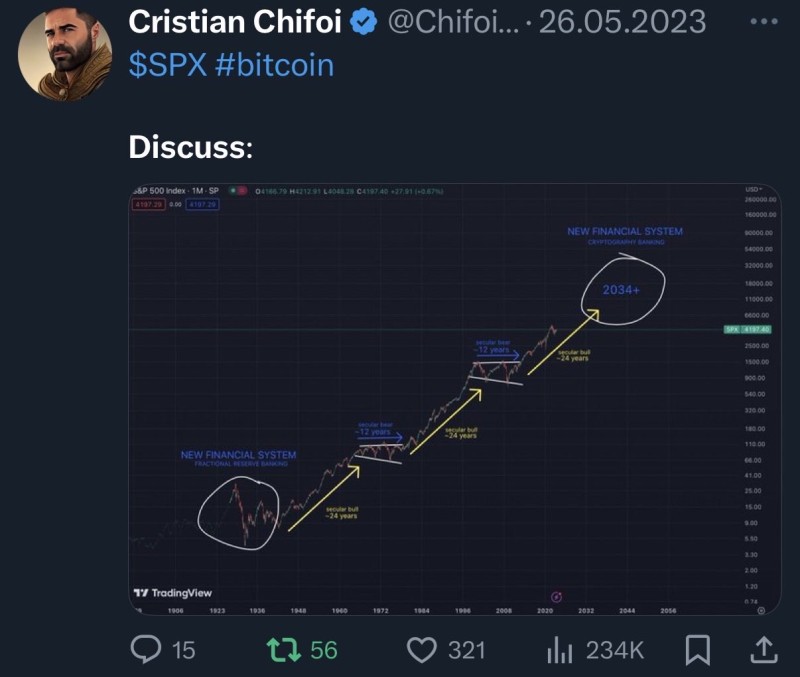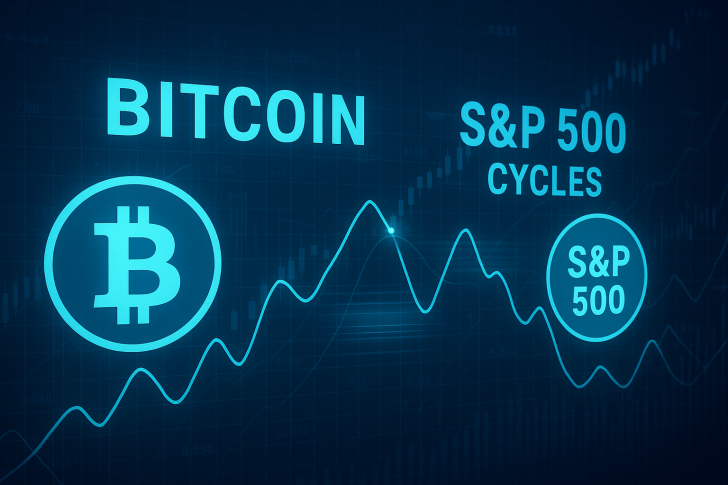Many analysts believe the next major financial transformation could arrive within a decade. This view suggests 2034 may mark the defining year when market cycles, cryptocurrency maturation, and macroeconomic forces converge to reshape the global financial system. This perspective draws on over a century of market data, suggesting we're approaching the end of one financial paradigm and the beginning of another built on cryptography and decentralization.
Cycles Converging Toward a Reset
Macro strategist Cristian Chifoi recently shared analysis comparing S&P 500 secular cycles with Bitcoin's evolution, spanning from the early 1900s to projections beyond 2034. The framework divides financial history into alternating 12- and 24-year cycles of "secular bears" and "secular bulls" — prolonged expansion periods followed by structural resets that defined major economic transitions like fractional reserve banking's rise, the post-war industrial boom, and the digital economy's emergence.

His chart reveals multiple critical cycles approaching simultaneous completion: the secular bull market starting in 2009 peaks around 2034, the global inflation cycle may reach exhaustion, bond yields could settle into new equilibrium, Bitcoin's supply will be 99% mined, and the Kondratiev Wave is forecast to shift from "spring" to "summer" phase, typically associated with economic acceleration.
Historical Patterns and Future Implications
Each previous reset marked on the chart — 1929, 1974, and 2008 — was followed by fundamental paradigm shifts. The latest projection identifies 2034 as the next inflection point, labeled "New Financial System: Cryptography Banking," suggesting a migration from traditional models toward digitally native frameworks powered by blockchain technology. The analysis poses whether we're returning to century-old systems or evolving toward upgraded technology. While timing such transitions precisely remains impossible, this long-view analysis highlights that markets and money evolve in waves. If historical rhythms continue, the coming decade could redefine financial infrastructure, merging technology, scarcity, and trust into a unified digital foundation.
 Saad Ullah
Saad Ullah

 Saad Ullah
Saad Ullah


